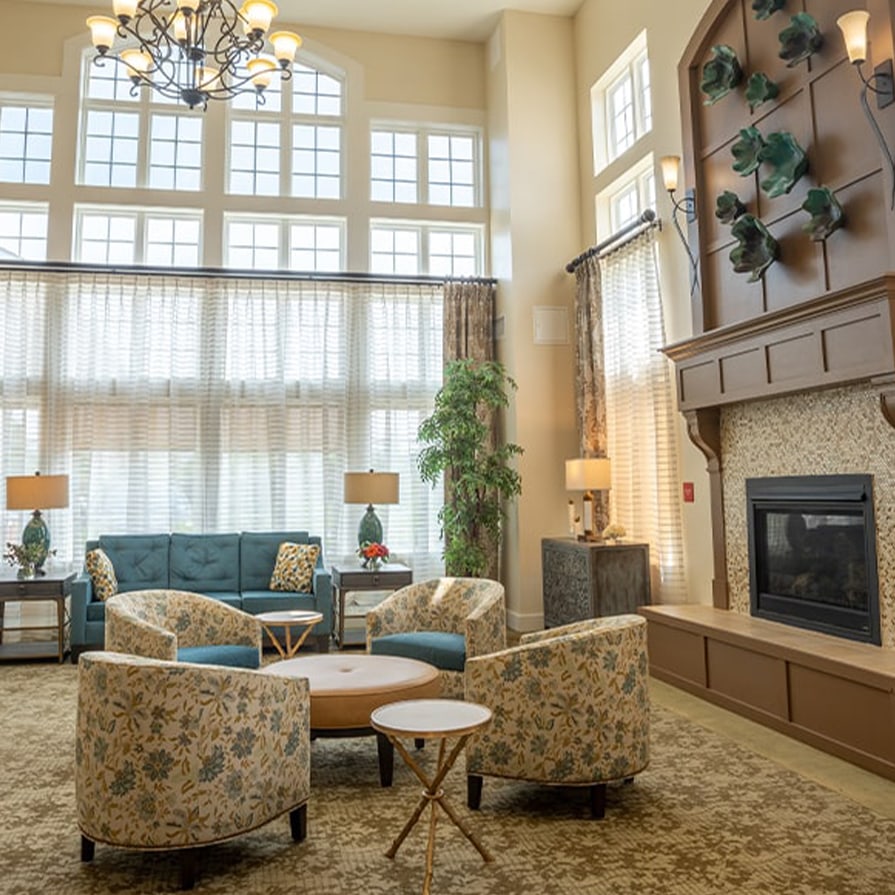Memory care offers a unique space for those in need. When conditions like Alzheimer’s disease and dementia are at play, memory care helps older adults thrive. Through thoughtfully structured routines and enriching activities, these communities create a sense of comfort and purpose. They’re an incredible way to maintain dignity and respect for those living with complex memory-related conditions.
Every day in a memory care community is carefully designed. They provide both the familiarity of routine and the joy of personal engagement. Memory care includes structured routines, cognitive stimulation, and engaging activities. This is key to boosting a person’s quality of life.
Mid-Morning Activities: Stimulating Minds & Bodies
In memory care, every day includes different activities. In the mid-morning, after a nutritious breakfast, the focus is on both physical and mental stimulation. This brings balance to each day and helps community members maintain their overall wellness. This is invaluable when cognitive decline is at play.
Group Exercises
Physical activities bring people together to boost health and enjoyment. Some common group exercises in memory care include:
- Light stretching to promote flexibility and joint mobility.
- Chair yoga to improve relaxation and balance.
- Tai chi to enhance coordination and reduce fall risks.
These slow, gentle exercises help community members stay physically healthy.
Brain-Boosting Games
After movement, games take center stage. These activities stimulate discussion, creativity, and fun. Some common memory activities include:
- Memory games designed to strengthen recall abilities.
- Puzzles to challenge problem-solving skills.
- Trivia challenges that encourage social interaction and knowledge retention.
These help strengthen the mind and slow the effects of cognitive decline.
Creative Expression
Each day presents an opportunity to engage in creative activities. These activities may be simple, but they can be extremely rewarding for older adults. Some common creative activities in memory care include:
- Painting sessions, inviting exploration through color and form.
- Storytelling workshops where memories are expressed in writing and illustrations.
- Music circles, offering opportunities to listen to melodies both new and old.
These activities are a helpful way to engage the mind. They also strengthen a person’s emotional connections with caregivers and peers.
Lunchtime Break: Building Community Through Nourishment
Midday meals are a time to slow down, pause, and enjoy some friendly company. It’s an opportunity for community members to connect. Caregivers go out of their way to make sure every community member feels supported. If anyone needs support, professionals are available to help.
Afternoon Activities: Engaging Interests & Abilities
Afternoons in memory care are filled with a variety of personalized activities. Each is carefully selected to match every person’s interests and abilities.
Gardening Activities
Community members who love caring for plants and flowers can join gardening projects. Gardening is extremely beneficial for older adults, as it provides numerous cognitive and physical benefits. For older adults who love nature, gardening is an excellent activity.
Sharing Memories
Reminiscence therapy involves storytelling sessions focused on memories and milestones. Through these moments, community members share experiences, rediscover self-identity, and feel closer to their community. These guided sessions are great ways to boost positive emotions and strengthen relationships.
Animal Companionship
Pet therapy is a comfortable way to spend time with therapy animals. This helps reduce anxiety, boost mood, encourage social interaction, and more. It’s fun and engaging as well, making it a highlight of a person’s day.

Evening Wind-Down: Promoting Relaxation & Rest
As the day winds down after a delicious dinner, the focus shifts to relaxation. Caregivers step in to help community members prepare for a restful night. This tends to include calming activities such as:
- Listening to soothing music or nature sounds
- Reading a favorite book or poem
- Practicing gentle stretches or yoga
- Sipping a warm, caffeine-free beverage
- Engaging in calming breathing exercises
This personalized assistance helps with bedtime routines. It makes it easier to ease into the night and encourages your loved one to stay comfortable and peaceful.
Nighttime Support & Safety
Nighttime in memory care is all about peace of mind—for everyone involved. Caregivers are available around the clock to offer support, address concerns, and assist as needed. Even the environment itself is supportive, with calming colors, soft lighting, and soothing sounds to promote relaxation.
Meanwhile, additional security features like door alarms, keypad entry systems, and enclosed outdoor spaces help. These all keep community members safe throughout the night. These features minimize the risk of wandering and getting lost, which makes it easier to keep every community member safe throughout the night.
Creating a Supportive & Vibrant Community
Memory care is about treating every person as the unique individual they are. It’s a lifestyle tailored to address the unique challenges dementia can cause—and helping every community member thrive along the way. Life in memory care should be supportive, compassionate, and fulfilling—and that’s exactly what we provide here at Juniper Village at Williamstown.
Here, each day is an opportunity to celebrate life and create meaningful connections. From enriching daily routines to innovative methods of participation, our memory care lifestyle offers a structured approach to helping people thrive. Schedule a tour with us today, and let us step in to help your family.







